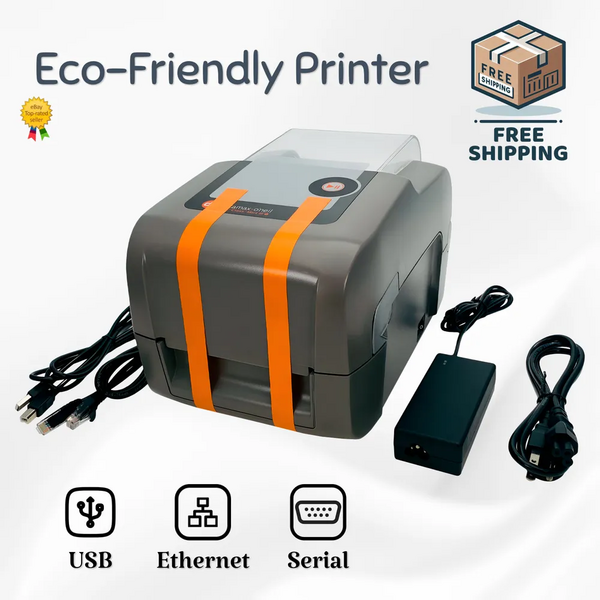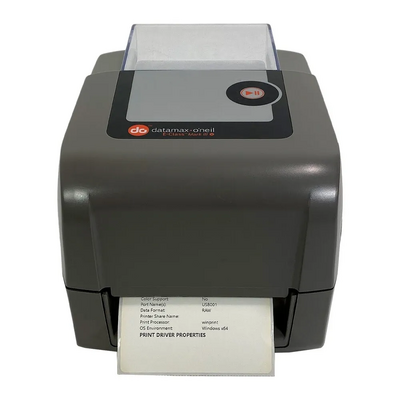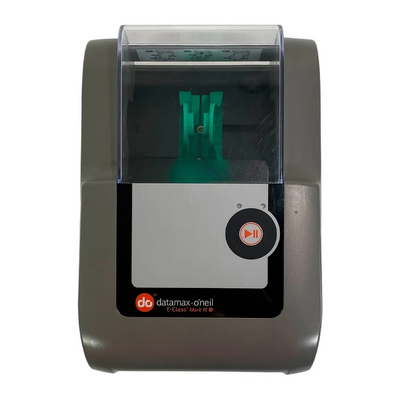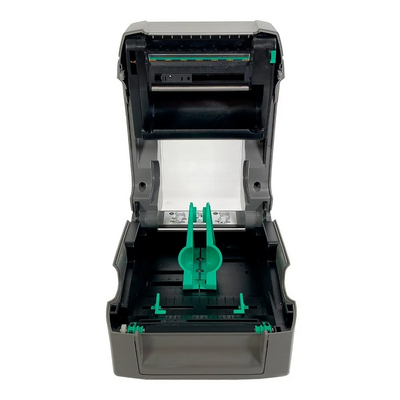
Datamax E-4205A
| Brand | Datamax 2015 |
| Model | EA2-W7-0J0A5A00, DMX, Ethernet Network, AC Adapter |
| Released Year | 2015 |
| Type | Printers |
| Series | E-Class |
| Status | Active |
Quick view
Overview
The Datamax E-4205A, part of the E-Class series, is a thermal direct and thermal transfer printer designed primarily for high-performance label printing in office and industrial environments. It supports multiple connectivity options including DMX protocol and Ethernet networking, ensuring flexible integration into existing network frameworks. Equipped with a robust print engine, the device delivers print speeds up to 6 inches per second with a maximum print resolution of 203 dpi. The E-4205A is compatible with a variety of label and ribbon widths, supporting widths up to 4.16 inches, suitable for diverse labeling needs. The printer features an easy-to-load media mechanism and includes an AC adapter for stable power supply during extended operation. Its firmware supports advanced coding and barcoding standards which are essential for tracking, shipping, and manufacturing processes.
The model EA2-W7-0J0A5A00 specifically integrates Ethernet connectivity to facilitate network printing tasks, while the DMX interface ensures compatibility with legacy data communication standards often used in industrial settings. This combination allows the E-4205A to be adaptable to various enterprise environments with different data transmission requirements.
Specifications
| Input Type | Monochrome |
| Output Type | Black & White |
| Memory | Flash and RAM for label storage and processing |
| Custom Bundle | No |
| MPN | EA2-W7-0J0A5A00, DMX, Ethernet Network, AC Adapter |
| Supported Paper Size | Max Media Width: 4.4” |
| California Prop 65 Warning | This item does NOT contain any chemicals or materials specified in the California Prop 65 list. |
| Type | Label Printer |
| Technology | Thermal |
| Maximum Resolution | 203 x 203 DPI |
| Model | E-4205A |
| Connectivity | DMX, Ethernet Network |
| Features | Networkable, Portable |
| Black Print Speed | 5 ips |
| Product Line | E-Class |
| UPC | 007540709073 |
| Printer Type | Thermal Direct and Thermal Transfer |
| Print Resolution | 203 dpi |
| Maximum Print Speed | 6 inches per second |
| Maximum Print Width | 4.16 inches (105.7 mm) |
| Power Supply | AC Adapter |
| Label Compatibility | Various widths and types |
| Firmware Features | Supports multiple barcode symbologies and label formats |
| Dimensions | Approx. 13 x 8 x 11 inches (W x H x D) |
| Weight | Approximately 5.4 kg (12 lbs) |
| Environmental Operating Range | 5°C to 40°C (41°F to 104°F) |
| Accessories | Optional peel and present, cutter modules |
Images
Key Advantages
The Datamax E-4205A offers reliable print quality, ensuring clear barcode and label readability for inventory and logistics management. Its inclusion of Ethernet networking provides seamless integration into corporate IT infrastructure, enabling shared access to printing resources. The dual DMX and Ethernet interfaces enhance versatility by supporting both modern and legacy communication protocols. Its sturdy build accommodates demanding industrial environments, minimizing downtime and maintenance. The printer's user-friendly media loading system reduces operator errors and increases productivity. Additionally, its compatibility with a broad range of label formats makes it suitable for various application scenarios.
This printer is also energy efficient, complying with power saving standards embedded within the AC adapter, reducing operational costs over time.
Limitations
The Datamax E-4205A has a fixed print resolution of 203 dpi, which may not meet requirements for applications needing higher definition printing. It is limited in print speed compared to newer models offering faster throughput, potentially impacting high-volume production environments. The device's firmware may lack support for some modern programming languages or advanced graphics capabilities found in more recent printers. Additionally, the physical size and weight of the unit can limit portability for mobile operations. Its reliance on an external AC adapter means it cannot be battery operated or powered via USB alone. Lastly, without advanced wireless connectivity options, its deployment in wireless-dependent office setups may require additional infrastructure investments.
FAQ
What types of printing technology does the Datamax E-4205A use?
The Datamax E-4205A uses thermal direct and thermal transfer printing technologies suitable for durable label and barcode printing.
Does the E-4205A support network connectivity?
Yes, it supports Ethernet networking along with DMX protocol for network and legacy device integration.
What is the maximum print width for this printer?
The E-4205A can print on labels up to 4.16 inches (approximately 105.7 mm) wide.
Is the printer compatible with modern barcode standards?
Yes, it supports a wide range of barcode symbologies commonly used in industrial and logistics applications.
Can the printer operate without being plugged into AC power?
No, it requires connection to an AC power adapter and does not support battery or USB-only power options.
Is this printer still supported by Datamax for parts and service?
As of now, the E-4205A is not officially discontinued and some support including parts and service can be obtained.
What are the recommended environments for using the E-4205A?
It is designed for office and industrial office electronics environments where moderate volume label printing is required.
Disclaimer
The content on is provided for general informational purposes only. We do not guarantee the accuracy, completeness, or reliability of any information, specifications, or visuals presented on the site.
is not responsible for any content, images, or data uploaded or shared by users. Users are solely responsible for the content they submit.
We may include links to third-party websites for convenience. We do not endorse or take responsibility for the content or policies of any external sites.
Use of the site is at your own risk. Always verify critical information independently before making decisions based on content from this website.







